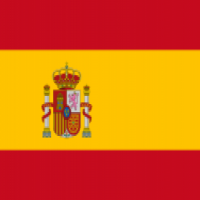Summary:
An engineering research group from a Spanish university offers the use of modern soft computing techniques, widely contrasted, to obtain automated systems that allow wind prediction in wind farms and maximize the benefits associated with the production of this type of energy. The algorithms have already been developed and tested.
The research group looks for commercial agreements with technical assistance, cooperation agreements or joint ventures.
Description:
Soft Computing is one of the most modern areas of artificial intelligence research. Among others, it focuses on the design of intelligent systems that can obtain and represent information given by series of information data, which can be uncertain, imprecise and / or incomplete.
The research group has focused its attention for many years, on three soft computing techniques of recent creation and study, such as: neural networks, vector machines, support and evolutionary techniques.The first two are two of the most important soft computing techniques of recent years.
The first one is based on the simulation of the behavior of the human brain for the learning of events and the reproduction of them. The second is based on complex statistical models for the search of models that respond more efficiently to future external variables.
Both techniques allow the development of regression models based on data from a sample of the actual process to be modeled, allowing to reproduce or predict approximately the real effects of the same process.
Evolutionary techniques allow solving complex optimization problems in a fast efficient manner. Among others, they allow to make modifications on the previous regression models in order to improve their performance that could not be done by classical optimization techniques.
One of the most direct applications where the group has used this type of techniques is the wind prediction in wind farms. For this, given a series of variables of the park's environment, regression models can be constructed for the prediction of the wind module in each of the wind turbines of a specific wind farm.
These variables can be of a constant nature over time, such as the orography of the wind farm; past variables, such as the wind information in the different wind turbines in annual periods prior to the study period; or predictions of meteorological variables (wind, wind direction, temperature, etc.) using global prediction models.
Independently the prediction of the wind levels in each of the wind turbines, these techniques allow the evaluation of the power generated in the wind farm (due to the almost direct relationship between both variables) not only in normal operating conditions where all wind turbines remain in full performance, but also the prediction of wind when one or some of the wind turbines have to be stopped for reasons of safety or damage, without this being a reason for significant alterations in the prediction.
On the other hand, an extension in the use of soft computing techniques has allowed the development of prediction systems composed of multiple regression models based on multiple meteorological models. These models are complemented by the use of network grouping techniques, achieving a very significant improvement in the performance of these systems with respect to the typical way of using the models.
They look for companies from the renewable energy sector to reach commercial agreements with technical assistance and cooperation agreements to continue expanding the soft computing techniques and joint ventures to enter in new markets.
Type (e.g. company, R&D institution…), field of industry and Role of Partner Sought:
The Spanish research group looks for renewable energy companies to reach commercial agreements with technical assistance to provide services in exchange for an agreed retribution, cooperation agreements to provide widespread access to affordable clean energy and wind energy joint ventures to establish a foothold in the international markets and challenge other early manufacturers.
Stage of Development:
Available for demonstration
Comments Regarding Stage of Development:
The algorithms have already been developed and tested.
IPR Status:
Secret Know-how
Comments Regarding IPR Status:
The group owns the industrial secret of technology
External code:
TOES20181002002








